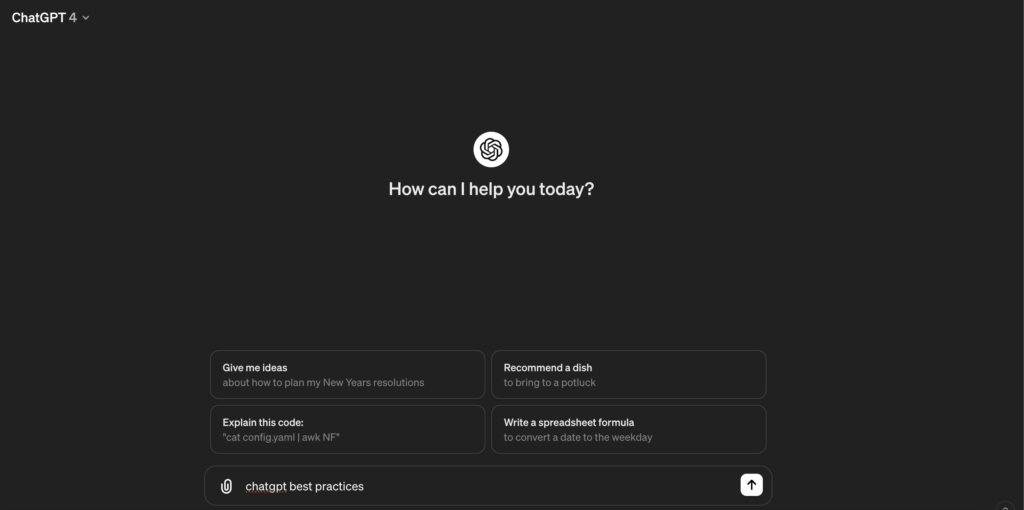In today’s fast-paced digital landscape, the art of crafting effective prompts for AI like ChatGPT and Google Bard is not just a skill but a game-changer. This guide distills the essence of generating high-quality outputs through a meticulously developed formula, emphasizing the six foundational building blocks of a good prompt.
The Six Building Blocks of an Effective Prompt
Understanding and applying these six components in your prompts can transform the quality of the output you receive from ChatGPT or Google Bard.
-
Task: Begin with clarity by stating your request with an action verb. Specify whether your task is straightforward or multifaceted.
-
Context: Provide relevant information to guide the AI. Consider the user’s background, what success looks like, and the environment. This helps in tailoring the response to your specific needs.
-
Template: A precise template or example can significantly enhance the output’s relevance and quality. Whether it’s improving a resume or preparing for an interview, providing a clear structure or example guides the AI in generating outputs that match your expectations.
-
Persona: Tailoring the AI’s persona to suit your needs can provide more targeted advice or content. Whether you need a data analyst or a copywriter, aligning the AI’s role to your scenario can lead to more personalized responses.
-
Format: Visualize how you want the final output to look. Specifying the format, whether it’s an email, a table, or a document, ensures that the AI presents information in the most useful manner for you.
-
Tone: The tone can greatly affect how the content is perceived. Whether you need a casual, formal, witty, or enthusiastic response, specifying the tone can make your prompt more effective.
Crafting the Perfect Prompt: A Step-by-Step Approach
To craft a prompt that maximizes the potential of ChatGPT or Google Bard, start by clearly defining the task with an action verb. For example, “Generate a five day itinerary for my business trip to Italy.” Next, add context by addressing the key questions related to the background, definition of success, and the environment. It should look something like this: “I am a coffee enthusiast on a business trip looking to visit three of the most popular coffee shops in Italy over the next five days. I can only allot six hours during the second day of my stay. Generate my five day itinerary.”
These next few steps are optional, but will customize the result more to fit your needs: If applicable, incorporate templates to provide a concrete example or framework for the AI to follow. Consider the persona that would best suit the advice or content you need, and specify this in your prompt. Then, clearly outline the desired format to ensure the output meets your requirements. Lastly, define the tone to match the intended emotional or professional resonance of the content.
Example: The Ultimate Prompt
“Task: Compose an email Context: You are the Chief Marketing Officer at Costco, celebrating the successful launch of an exclusive eco-friendly shoes in partnership with Puma, resulting in 500,000 units sold in the first month, doubling the initial sales forecast. Template: Structure the email with sections for a brief overview, the backstory of the product line development, detailed sales achievements, and acknowledgments to the product and marketing teams. Persona: Assume the role of an insightful yet personable leader. Format: Adopt a professional yet accessible email format, ensuring clarity and conciseness. Tone: Keep the tone upbeat, appreciative, and motivational to reflect the successful launch and positive team spirit.”
Final Thoughts
The journey from a beginner to a pro in prompting AI tools like ChatGPT and Google Bard is an exciting one. By understanding and utilizing the six key components of an effective prompt, you can significantly improve the quality of outputs for any task, from professional emails to creative content. Remember, practice makes perfect, and with each prompt, you’ll get closer to mastering the art of AI prompt engineering.

Ronan currently navigates the dynamic world of data science as a Data Analyst in a leading marketing firm. Passionate about bridging AI theory and practice, Ronan writes about AI fundamentals, Business Applications of AI, AI Business Ideas, and AI News, always at the forefront of emerging technologies and innovative strategies.
